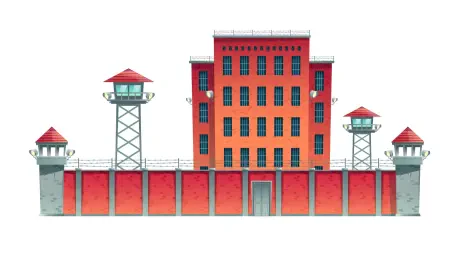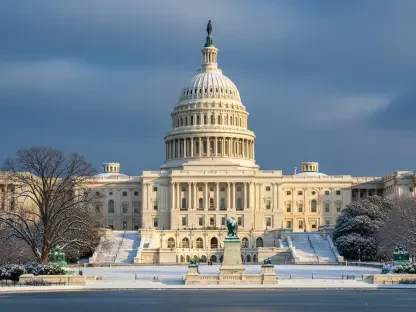Imagine a correctional system grappling with rising violence, where tragic incidents of inmate deaths, staff assaults, and drug overdoses paint a grim picture of daily operations, and in Arizona, this scenario is all too real, prompting the Arizona Department of Corrections, Rehabilitation & Reentry (ADCRR) to launch a groundbreaking initiative aimed at transforming the state’s prison landscape. With nearly 9,000 correctional officers and staff dedicated to public safety, the department has rolled out a multifaceted plan to address immediate security threats while fostering long-term rehabilitation. This report delves into the challenges, strategies, and potential impacts of this ambitious endeavor, shedding light on a pivotal moment for correctional reform in the state.
Overview of Arizona’s Correctional System Challenges and Goals
Arizona’s prison system, overseen by ADCRR, currently faces significant hurdles that threaten both inmate and staff safety. Overcrowding, outdated infrastructure, and limited resources have contributed to a troubling rise in violent incidents, including homicides within facilities, suicides, and physical assaults on correctional officers. Drug overdoses among inmates further complicate the environment, highlighting the urgent need for systemic change to curb contraband and improve oversight.
The driving force behind the new plan stems from these critical issues, with a clear mission to enhance safety across all facilities. Beyond immediate security concerns, the initiative places equal emphasis on rehabilitation, aiming to reduce recidivism by equipping inmates with skills for successful reintegration into society. This dual focus seeks to create a safer environment not just within prison walls but also for communities at large, supported by a workforce committed to navigating these complex challenges.
Core Components of the ADCRR Safety and Rehab Initiative
Enhancing Security Through Technology and Protocols
A cornerstone of the ADCRR plan involves leveraging advanced technology to bolster security within Arizona’s prisons. The department is expanding the use of CCTV systems and body-worn cameras, particularly in high-risk, close-custody units. These tools feed real-time data to the Emergency Operations Center (EOC), enabling swift responses to incidents and fostering greater accountability among staff and inmates alike.
In addition to surveillance upgrades, the initiative introduces practical measures to minimize violence. Inmates are now provided with safer items, such as plastic fans and lightweight padlocks, designed to prevent their use as weapons. Modernized mail processing protocols have also been implemented to intercept contraband at the source, addressing a key factor in drug-related issues and physical altercations within facilities.
Expanding Rehabilitation and Reentry Programs
Rehabilitation forms an equally vital part of the ADCRR strategy, with significant investments in programs designed to prepare inmates for life after incarceration. Through Arizona Correctional Industries (ACI), workforce development opportunities have increased by 10%, offering new certifications and apprenticeships. Currently, around 1,550 individuals benefit from 42 distinct programs, gaining practical skills to improve their employability upon release.
Educational advancements further complement these efforts, with additional instructors hired and testing procedures streamlined to ensure broader access to learning. A newly launched Peer Support Program, initiated this year, provides co-led vocational and rehabilitative support across various prison settings, from intake to reentry centers. Meanwhile, Medication Assisted Treatment (MAT) now reaches nine facilities, supporting nearly 7,000 individuals monthly with counseling and release planning to combat substance abuse.
Addressing Staff Support and Development Needs
Correctional staff in Arizona face immense pressures, from high vacancy rates to the daily demands of managing volatile prison environments. These challenges often lead to burnout and turnover, undermining the system’s ability to maintain order and implement reforms effectively. Recognizing this, ADCRR has prioritized staff welfare as a critical component of its overarching plan.
To address these issues, the department has introduced increased High-Risk Assignment Pay (HRAP) for officers in challenging units, alongside a revamped Correctional Officer Training Academy (COTA) curriculum that aligns with contemporary standards. A Next Level Leadership Workshop offers professional growth for staff at all levels, while realigned corporal positions and aggressive hiring campaigns aim to improve retention and morale across the board.
Community and Legislative Support for the Plan
The ADCRR initiative has garnered widespread approval from key stakeholders, reflecting a shared commitment to correctional reform. Community leaders, such as George Nolan from New Freedom, have lauded the department for embedding reentry coordinators within local areas, creating partnerships that reduce violence and inspire hope among inmates preparing for release. This grassroots approach underscores the plan’s focus on practical reintegration.
Legislative backing further validates the strategy, with State Representative Stephanie Stahl-Hamilton praising the innovative blend of faith-based services, educational opportunities, and treatment programs. Such endorsements highlight a growing consensus that rehabilitation, paired with robust security, offers a sustainable path toward safer prisons. Community and political support serve as a foundation for the plan’s credibility and long-term viability.
Future Implications for Arizona’s Correctional Landscape
The balanced approach of enhancing security while prioritizing rehabilitation holds the potential to fundamentally reshape prison culture in Arizona. By curbing violence through technology and contraband control, the system could see a marked decline in incidents, fostering a more stable environment. Simultaneously, expanded programming may lower recidivism rates, as inmates gain the tools needed to rebuild their lives outside of prison.
Looking ahead, the integration of technology-driven solutions promises to redefine incident management and accountability within facilities. If sustained, these measures could contribute to long-term public safety by addressing root causes of crime and reoffending. The success of such efforts will likely hinge on continuous evaluation and adaptation to emerging challenges over the coming years, such as from now through 2027.
Moreover, the emphasis on staff empowerment and community partnerships offers a blueprint for enduring progress. A well-supported workforce is essential to implementing reforms, while strong ties with local organizations ensure that reentry initiatives remain relevant and effective. These elements together suggest a transformative shift in how corrections are approached in the state.
Conclusion and Outlook for Safer Prisons and Communities
Reflecting on the comprehensive strategy rolled out by ADCRR, it is evident that a critical turning point has been reached in addressing both immediate safety concerns and long-term rehabilitation goals within Arizona’s prisons. The blend of security upgrades with expanded education, job training, and substance abuse treatment has laid a solid foundation for change. Moving forward, stakeholders should focus on scaling successful programs, ensuring adequate funding, and regularly assessing outcomes to refine approaches. By fostering collaboration between correctional leaders, community groups, and policymakers, Arizona could build on this momentum to create a model for safer, more rehabilitative prison systems nationwide.









